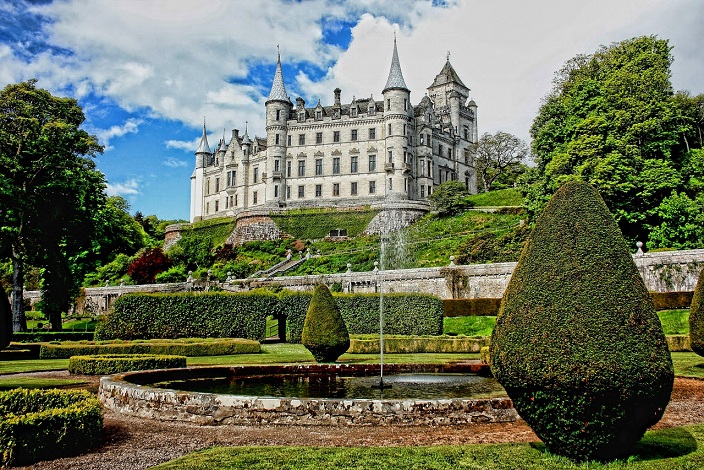This time of year holiday traditions abound in Scotland, but a quick search will turn up surprisingly little mention of Christmas. Instead you’ll discover a head-scratching avalanche of “Hogmanay” customs and celebrations you may have never heard of.
 Following the Reformation, Scotland abolished Christmas and the accompanying festivities for nearly four hundred years. In fact, until 1958, Christmas was a typical working day for most Scots, marked only by small family gatherings. Nonetheless, the rich traditions and boisterous merrymaking of the earlier era were never lost.The resourceful Scots simply shifted their holiday exuberance to New Year’s, the day they renamed “Hogmanay”. Although the origins of the name have been lost, Hogmanay is still the central winter holiday in Scotland. It far outshines Christmas with rollicking celebrations so lively that today both January 1 and 2 are national holidays.
Following the Reformation, Scotland abolished Christmas and the accompanying festivities for nearly four hundred years. In fact, until 1958, Christmas was a typical working day for most Scots, marked only by small family gatherings. Nonetheless, the rich traditions and boisterous merrymaking of the earlier era were never lost.The resourceful Scots simply shifted their holiday exuberance to New Year’s, the day they renamed “Hogmanay”. Although the origins of the name have been lost, Hogmanay is still the central winter holiday in Scotland. It far outshines Christmas with rollicking celebrations so lively that today both January 1 and 2 are national holidays.
So what are you doing for Hogmanay this year? To celebrate the season Scottish-style you’ll need to do some “Redding” before “The Bells”, prepare for the handsome “First Footer” and stock up on whiskey, shortbread and “black bun” before the “Hogmanay” toast. If all this sounds fun but confusing, here’s our pocket guide to Scottish holiday celebrations:
Hogmanay: Celebration of the New Year in Scotland.
The Bells: The first bell chime at midnight signaling the New Year is called “The Bells”, so you’ll find that Scottish holiday traditions either build up to this event or follow it.

Redding: An important Scottish tradition, “Redding” is the custom of cleaning up your house (and life) in preparation for the New Year. The tradition of cleaning ashes from the fireplace at a time when coal fires were common has since evolved to include cleaning up debts and other unfinished business.
First Footing: Immediately following “The Bells”, friends and neighbors visit one another bringing Scottish treats like shortbread and plum pudding, black bun, whiskey and a traditional lump of coal for the fire. However, the first gift-bearing person to cross the threshold is known as the “First Footer” and is hoped to be a handsome young man. Indeed!
Auld Lang Syne: Penned by Scottish poet Robert Burns in 1788, this classic is sung by Scots (and people all around the world) at the stroke of midnight. If you’re lucky enough to be one of the 300,000 people flooding the streets of Edinburgh for Hogmanay, you’ll have a chance to sing this heartwarming song of friendship amid one of the most fabulous fireworks shows in the world.





